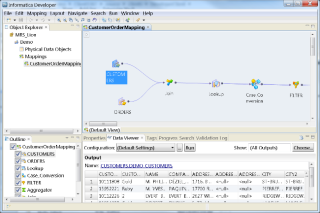Cómo instalar Foreman en Ubuntu 16.04 LTS
¿Usando un sistema diferente? Foreman es una herramienta gratuita y de código abierto que lo ayuda con la configuración y administración de servidores físicos y virtuales. Forema
Packer is a server imaging tool developed by HashiCorp. Server imaging; or alternatively, immutable infrastructure; is a popular alternative to runtime configuration tools, such as Ansible or Puppet. It is based on the idea that once a server is deployed, you never change it; instead, you deploy a new server with your changes and then tear down the old one. This makes server maintenance easier, and allows you to more efficiently scale across a large number of machines.
While Packer doesn't support Vultr out of the box, there is a plugin that adds that support. Instructions for installing Packer with Vultr support can be found on the plugin's README. The rest of this article assumes that you have Packer installed, as well as the Vultr plugin.
The purpose of Packer is to produce server images, or artifacts that can be used to create a new server exactly as it was at imaging time. For Vultr, those artifacts are called Snapshots. The plugin works by deploying a new VPS, running your defined provisioners on it, creating a Snapshot of it, and then tearing down the VPS. When you want to create a new server from your image, simply call Vultr's API to deploy a new VPS with the desired Snapshot as its OS.
Packer takes a JSON file defining the build that it should run as input. Here is a sample file defining a Vultr build:
{
"variables": {
"vultr_api_key": "{{env `VULTR_API_KEY`}}"
},
"builders": [
{
"type": "vultr",
"api_key": "{{user `vultr_api_key`}}",
"snapshot_description": "My Awesome App",
"region_id": "2",
"plan_id": "201",
"os_id": "167",
"ssh_username": "root"
}
]
}
This file has two top-level keys, variables and builders. The variables key is used to define custom variables, and in this case is used to incorporate the VULTR_API_KEY environment variable in a way that can be used later. The builders key contains a list of builds to run, in this case only our Vultr build. Let's break that build down a little:
type: This defines the builder to actually use, and for Vultr builds this should always be vultr.api_key: In order to run the build, you need an API key, which is defined here. This example defines it as the value of the vultr_api_key user variable, which further up is set to the value of the VULTR_API_KEY environment variable.snapshot_description: The description of the resulting snapshot.region_id: The region to deploy a VPS to. This doesn't affect the final snapshot, only the server that the snapshot is created from.plan_id: The plan to use for the VPS. Future uses of this snapshot must define a plan that is at least this large.os_id: The Operating System to base the snapshot on.ssh_username: The username that will be used when SSH'ing into the server for provisioning. For Linux servers, this will usually be root.To use it, save this file with a name like server.json, and then run the command packer build server.json. You will see some output indicating the status of the build, which will take a few minutes.
When you run this build, a new server named Snapshotting: My Awesome App will be created, snapshotted, and then destroyed. With no provisioners defined, that is all that happens. For more information on defining provisioners, refer to Packer's documentation.
Once the build is finished, Packer will output the ID of the resulting snapshot.
These three values are required for every Vultr build, but can be defined in one of several ways. For each one, you should specify exactly one of its variations in order to avoid ambiguity:
Region information can be queried via the API: https://www.vultr.com/api/#regions_region_list
region_id: The ID of the region, e.g. 2region_code: The code of the region, e.g. ORDPlan information can be queried via the API: https://www.vultr.com/api/#plans_plan_list
plan_id: The ID of the plan, e.g. 201Operating System information can be queried via the API: https://www.vultr.com/api/#os_os_list
os_id: The ID of the OS, e.g. 167¿Usando un sistema diferente? Foreman es una herramienta gratuita y de código abierto que lo ayuda con la configuración y administración de servidores físicos y virtuales. Forema
SaltStack es un programa de administración de configuración basado en Python que está optimizado para la automatización de archivos de configuración, implementaciones y cualquier otra cosa
SaltStack, o Salt, es una solución de gestión de configuración de código abierto popular que se puede utilizar para implementar ejecución remota, gestión de configuración, bacalao
Si bien SaltStack es una gran herramienta para ejecutar operaciones en muchos servidores simultáneamente, también admite configuraciones predeterminadas definidas por host almacenadas en un
What is a Load Balancer Load Balancers sit in front of your application and distribute incoming traffic across multiple instances of your application. Fo
Hay muchas formas de automatizar el proceso de configuración y configuración de una caja. Por alguna razón, si todo nuestro sistema en este punto comprende solo
Using a Different System? Ansible is an open source tool for automating tasks. It manages the configuration of your Linux and Windows servers. It work
Introduction Strider CD is an open source continuous deployment platform. The application is written in Node.js and uses MongoDB as a storage backend. Stride
¿Usando un sistema diferente? Introducción Continuous Integration es una práctica de desarrollo de software DevOps que permite a los desarrolladores fusionar frecuentemente
¿Usando un sistema diferente? GoCD es un sistema de automatización y entrega continua de código abierto. Le permite modelar flujos de trabajo complejos utilizando su paralelo
Using a Different System? Introduction Continuous Integration is a DevOps software development practice which enables the developers to frequently merge th
¿Usando un sistema diferente? Ansible es una herramienta de código abierto para automatizar tareas. Gestiona la configuración de sus servidores Linux y Windows. Funciona
Jenkins es una herramienta popular de CI de código abierto (integración continua) que se usa ampliamente para el desarrollo, implementación y automatización de proyectos. Este artículo será
Introduction Chocolatey brings package management that makes administering software and dependencies easy on Linux, to Windows. You can quickly and easil
¿Usando un sistema diferente? Foreman es una herramienta gratuita y de código abierto que lo ayuda con la configuración y administración de servidores físicos y virtuales. Forema
Introduction Drone is an automated, continuous testing and delivery platform which runs on your own infrastructure. Drone supports any language, service o
ZPanel, un panel de control de alojamiento web popular, se bifurcó en 2014 a un nuevo proyecto llamado Sentora. Aprende a instalar Sentora en tu servidor con este tutorial.
Aprende cómo instalar Vtiger CRM, una aplicación de gestión de relaciones con el cliente, en CentOS 7 para aumentar tus ventas y mejorar el servicio al cliente.
Esta guía completa le mostrará cómo configurar un servidor Counter-Strike 1.6 en Linux, optimizando el rendimiento y la seguridad para el mejor juego. Aprende los pasos más recientes aquí.
Los ataques de ransomware van en aumento, pero ¿puede la IA ayudar a lidiar con el último virus informático? ¿Es la IA la respuesta? Lea aquí, sepa que la IA es una bendición o una perdición
ReactOS, un sistema operativo de código abierto y gratuito, está aquí con la última versión. ¿Puede satisfacer las necesidades de los usuarios de Windows de hoy en día y acabar con Microsoft? Averigüemos más sobre este estilo antiguo, pero una experiencia de sistema operativo más nueva.
Whatsapp finalmente lanzó la aplicación de escritorio para usuarios de Mac y Windows. Ahora puede acceder a Whatsapp desde Windows o Mac fácilmente. Disponible para Windows 8+ y Mac OS 10.9+
Lea esto para saber cómo la Inteligencia Artificial se está volviendo popular entre las empresas de pequeña escala y cómo está aumentando las probabilidades de hacerlas crecer y dar ventaja a sus competidores.
Recientemente, Apple lanzó macOS Catalina 10.15.4, una actualización complementaria para solucionar problemas, pero parece que la actualización está causando más problemas que conducen al bloqueo de las máquinas Mac. Lee este artículo para obtener más información
13 Herramientas comerciales de extracción de datos de Big Data
Nuestra computadora almacena todos los datos de una manera organizada conocida como sistema de archivos de diario. Es un método eficiente que permite a la computadora buscar y mostrar archivos tan pronto como presiona buscar.




